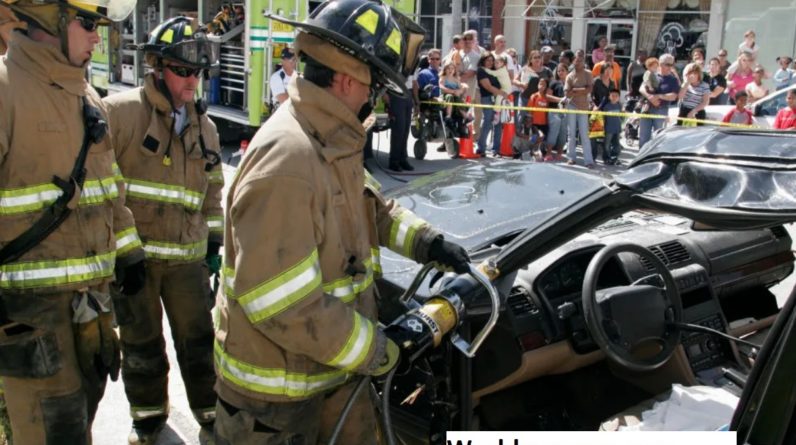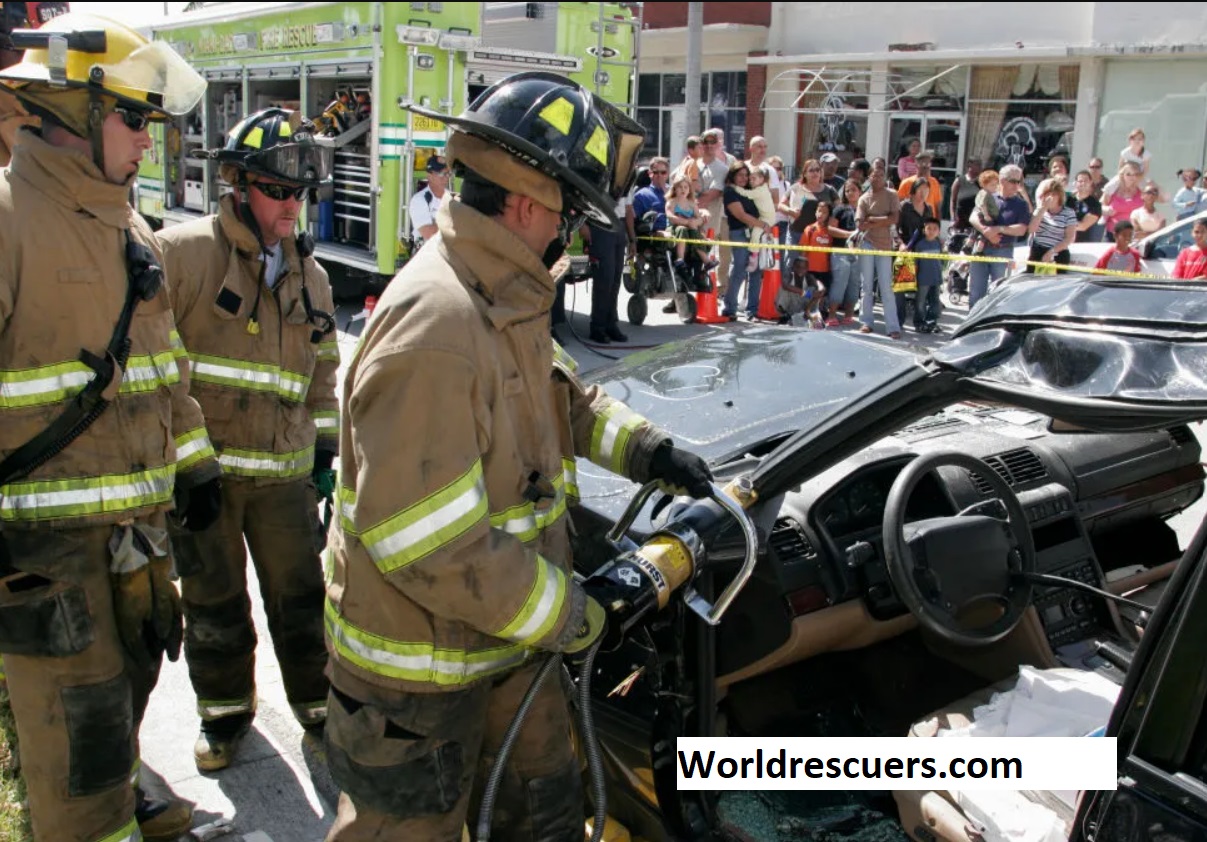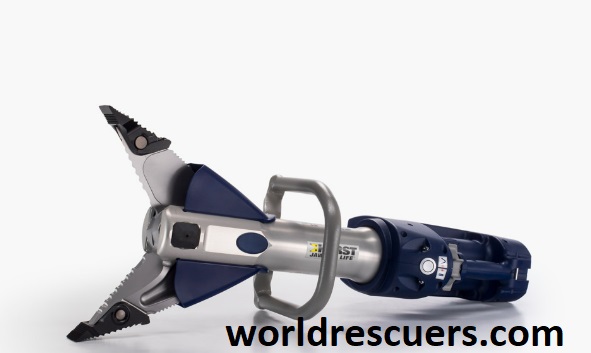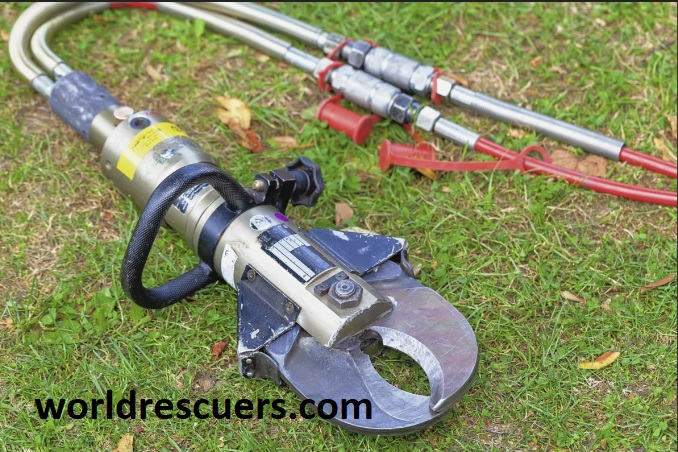
Jaws of life – a tool to give you life again
Jaws of life are not a single tool; rescuers use a set of tools. Imagine someone is driving a car and the met with an accident. The reason for the accident is unknown. The passenger opens their eyes and finds themself trapped in his or her car. Any part of the extremities is fully underneath in the car and immobile. During this situation, Rescuers or Firefighters use this set of tools called jaws of life.

This term-Jaws of life reflects various piston-rod hydraulic tools called cutters, spreaders, and rams. These tools are used to pry open vehicles met with road accidents having trapped victims. During these kinds of emergencies, response time and time to rescue the trapped victim is the most important factor. In such nature of emergencies, these devices played a vital role. These jaws of life tools can help firefighters and rescuers to extricate the trapped victims.
The building collapses either because of Natural or artificial causes, which also results in trapped victims. The natural cause of building collapse is most of the time Earthquakes. The artificial cause mostly poor structure, bomb blasts, etc. The extensively required cutting, breaching, and spreading work in building collapse can only be met using these Jaws of Life. In this writing, you will know the simple hydraulic system used in these tools and the purpose and working capacity.
Who discovered the jaws of life?
Mike Brick was the first to coin the phrase “Jaws of Life” after he observed people saying their new device “snatched people from the jaws of death.” However, the name “jaws of life” is used colloquially to describe other hydraulic rescue tools used worldwide.
Simple Hydraulics tool
Hydraulic oil- incompressible, is the main component used for hydraulic machines. Incompressible oils are those types of fluids that have constant volume and density at every temperature. The eruption of fire is the main Hazard available in these tools- Jaws of life, due to higher temperatures. Therefore, phosphate-ester, which is fire-resistant and a non-conducting liquid, uses modern jaws of life tools.
How does Jaws of life work?
The working principle is that when a piston pushes down on the oil, this piston transfers all the force to the other piston through this hydraulic oil. As already said, the jaws of life tools are based on a set of various tools. They include portable engines, pumps, hydraulic cylinders, hose parts, and cutting and spread tools. The Jaws of life uses about one-quarter of hydraulic oil. An operator-controlled valve switch. This switch controls which port the fluid enters through. If it enters one port, the fluid forces the rod up and opens the arms of the cutter or spreader or blades of the cutter. The operator can then toggle the switch and cause the rod to retract, closing the arms or blades of the tool. In the other sections, we will take a close look at all the equipment that referred to the Jaws of Life.
What are the four Jaws of Life?
TYPES OF JAWS OF LIFE
The Jaws of Life has four main hydraulic rescue tools used in emergency services: spreaders, cutters, rams, and combinations. Each serves a vital function in the extrication process of trapped victims.
1. Hydraulic Spreader
When anybody hears about the Jaws of life, a Hydraulic spreader and a cutter are the two pieces that come to mind. The cutting and spreading of vehicles by the powerful jaws of these two machines is a piece of cake. Mostly, the spreader is for pulling the pieces of structure. The front blade can tear the vehicle easily. As the name reflects, the cutter is for cutting the metal parts like columns and bolts of vehicles. These two devices’ mechanics are very similar, and some Jaws of Life equipment combine the cutter and spreader into one machine.

A Spreader Bar of this hydraulic spreader is made of aluminum alloy with heated and treated steel tips. These tips have the maximum strength required for tearing vehicles or buildings. There are spreaders of different sizes, so the specifications differ regarding how much spreading force the equipment possesses. For example, let’s look at the ML-32 Hurst Jaws of Life spreader. This particular hydraulic spreader provides the following;
Specifications of Hydraulic Spreader
Other spreaders can provide more or less spreading and pulling force. The body of the ML-32 spreader is made of aluminum alloy, and the piston is. This piston rod is made from forged alloy steel, having maximum strength. Upon starting the portable engine of jaws of life, oil flows through attached hydraulic hoses through the hydraulic pump. A typical power unit might be a 5-horsepower gasoline engine that operates at 5,000 pounds per square inch (psi). Although in actuality, the pressure differs in different power units. This engine has a working efficiency of about 0.5 gallons (2 liters) of LPG for about 45 minutes to one hour.
| Specification | K Newtons | Pounds |
|---|---|---|
| Spreading Force | 71 | 16000 |
| Pulling Force | 64 | 14400 |
| Opening Distance | 32 inches | - |
To spread or open the arms of the hydraulic spreader, the operator slides a valve switch that causes the fluid to flow from one hose into the cylinder. This happened by pushing the piston and rod up. This rod is attached to linkages conjointly attached to the arms of the spreader. When the rod pushes up, it causes the linkages to rotate, which opens the arms. Again, to close the arms, the operator moves the valve in the opposite direction, which causes the hydraulic fluid to flow through a second hose. To properly use the spreader, Rescuers or firefighters insert the closed spreader arms into an opening in the vehicle or structure, such as a door jamb. The spreader can also clamp down on a structure to crush any material- concrete or metal, between its arms.
2. Hydraulic Cutters
Like spreaders, cutters have a mouth that opens and closes through a valve switch. However, cutters are more like big chompers that bite through the materials. These jaws of life tools can snap a car door like a twinge in seconds. Similarly, cutters also have aluminum alloy forged tips of steel. These tips have maximum strength. As the name reflects, cutters are for cutting and shearing metal and plastic materials. Cutting automobiles to rescue trapped passengers is an easy task through this tool. Jaws of life tools are not limited to only portable generators as a source of energy. These tools are operatable electrically, pneumatically, or hydraulically. 
| Specification | K Newtons | Pounds |
|---|---|---|
| Cutting force at blade center | 60 | 12358 |
| Pulling Force at the notch | 99.9 | 22455 |
| Diameter | 4.25 inches / 10.8 cm | - |
These hydraulic cutters have curved instead of arms in the spreader. The working principle is the same as in the spreaders. Hydraulic fluid flows into the cylinder and inserts pressure on the piston. The operator controls the direction as per operational requirements. The closing of opened curved caused the cutting of materials such as car roofs. Cutters are available in different sizes in the market. As for understanding, let us look at the Hurst Jaws of Life ML-40 model as an example.
3. Hydraulic Rams
After understanding the working principle of cutters and spreaders, understanding hydraulic rams is an easy task. Hydraulic rams are simple like scissors- which have a hydraulic system. It is the most basic type of Jaws of life. The basic function of rams is to push apart the selected sections of material. During a rescue operation, a Rescuer or a firefighter can use it to push the dashboard up, creating enough space to evacuate a trapped victim.
4. Combination Tools
Instead of carrying multiple tools around, combination tools allow firefighters to use one device to both cut and spread damaged areas and extricate victims. A combination tool can shave precious seconds off a rescue, lessening the chance of harm or stress to a victim.
Frequently asked related Questions.
Why do they call it the jaws of life?
The hydraulic system plays a vital part in the working of modern machinery. Within the machinery, no machine in the world can compete with the importance of the Jaws of Life. These machines have rescued thousands of lives where a few seconds could mean the difference between life and death.
Can jaws of life be used on Electric Cars?
Electric cars are touching the boom and becoming popular among the masses. The principal reason is they are environmentally friendly, fun to drive, and allow you to drive safely. There is a main risk of fire in electric vehicles. Before starting the rescue operation, ensure the elimination or mitigation of this fire hazard. The Jaws of life on electric vehicles are useable after controlling fire hazards as nothing is more important than life, whether this life is human or animal. The Jaws of life tools are available here; buy Now .
Stay also connected through social medial platforms for the further updates, i.e LinkedIn

Hi, I am John Smit a Captain in Fire Department City of Newyork with over years of experience in the field of Firefighting and HSE. My passion for fire safety started when I was a young boy and witnessed a neighbor’s house go up in flames along with precious lives. Since then, I had dedicated my life to ensuring the safety of buildings, properties, and individuals in case of a fire and medical emergencies.


